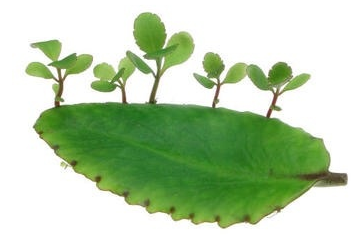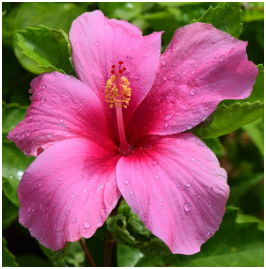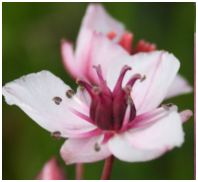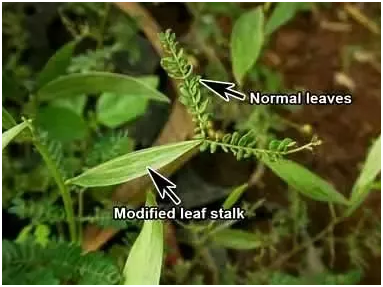What is the position of the ovary and the term for flower in the given figure?

1. Inferior, Epigynous
2. Superior, Hypogynous
3. Inferior, Hypogynous
4. Half-inferior, Perigynous

2. Superior, Hypogynous
3. Inferior, Hypogynous
4. Half-inferior, Perigynous
Match the sub aerial modifications of stem in Column I with examples of plants in Column II and select the correct answer from the codes given:
|
|
COLUMN I |
|
COLUMN II |
|
A. |
Runner |
a. |
Oxalis |
|
B. |
Stolon |
b. |
Mentha |
|
C. |
Offset |
c. |
Pistia |
|
D. |
Sucker |
d. |
Chrysanthemum |
Codes
A B C D
1. a b c d
2. b a c d
3. b a d c
4. a b d c
What type of aestivation is seen in the corolla of the flower shown?

1. Valvate
2. Imbricate
3. Vexillary
4. Twisted
The position of ovary and the type of flower shown in the given picture will respectively be called as:

1. Superior, Hypogynous
2. Superior, Epigynous
3. Inferior, Hypogynous
4. Inferior, Epigynous
The following can be the leaves of:

1. Larkspur
2. Limnophila
3. Pistia
4. Bryophyllum
The position of the ovary in the flower shown is:

1. Superior
2. Half superior
3. Inferior
4. Half inferior
Identify the corolla aestivation shown in the given picture of a flower:

1. Valvate
2. Twisted
3. Imbricate
4. Vexillary

To unlock all the explanations of 38 chapters you need to be enrolled in MasterClass Course.

To unlock all the explanations of 38 chapters you need to be enrolled in MasterClass Course.
Match each item in COLUMN I with one in COLUMN II and select the correct answer from the codes given:
|
|
COLUMN I [Fruit name] |
|
COLUMN II [Edible part] |
|
A. |
Apple |
a. |
Juicy placental hair |
|
B. |
Guava |
b. |
Thalamus and pericarp |
|
C. |
Orange |
c. |
Fleshy thalamus |
|
D. |
Litchi |
d. |
Aril |
Codes
A B C D
1. b c d a
2. b d a c
3. c b a d
4. d c b a
Look closely at the gynoecium of the flower in the picture. The description of this gynoecium will be:

1. apocarpous monocarpellary
2. apocarpous multicarpellary
3. syncarpous monocarpellary
4. syncarpous multicarpellary
In Acacia, the modified leaf stalk shown are called as:

1. Phylloclade
2. Cladode
3. Phyllode
4. Hydathode






